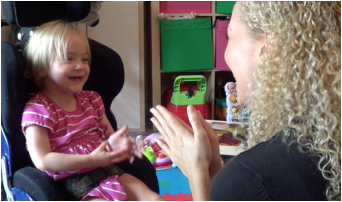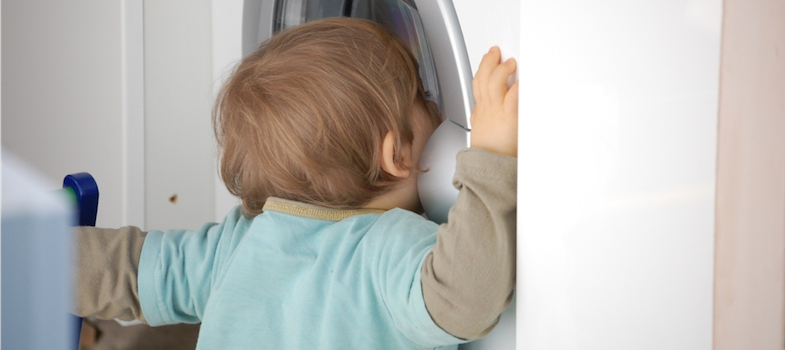Using In-the-Picture

(Photograph courtesy of the National Portage Association www.portage.org.uk)
Using In-the-Picture
From the examples and interviews with practitioners that you have seen so far in this course you will recognise that In-the-Picture has been used in various situations and for different reasons. In this section you are going to explore in a little more detail the practical applications for the approach which have been developed by practitioners.
Where can In-the- Picture been used?
The researchers who developed In-the-Picture have been involved in supporting its use by other practitioners in the Early Childhood sector. It has been used by Portage Home Visitors during their work with young pre-school children with learning difficulties/disabilities and their families. This group of practitioners have reported using the In-the-Picture approach during home visits, group play sessions and as part of their support work with early childhood settings particularly during transition. Its use has not been dependent on children being a certain age or level of understanding because the flexibility of In-the-Picture means that it can be adapted to engage with the perspectives of all children.
Practitioners based in a range of nurseries and playgroups have also reported on their use of In-the-Picture primarily to support the inclusion of a child with learning difficulties within their setting. Developing an understanding of children’s play preferences and early friendships have been focal points for using the approach.
However there are really no limitations to where In-the Picture can be used. As you will have realised from working through the previous sections of this course. It is a fairly low key, uncomplicated approach that involves few resources. In-the-Picture can be utilised both indoors and outdoors, in homes, educational settings and informal gatherings. Key questions to consider before planning to use the approach are:
- Is there time and space to observe the child?
- Is there an opportunity to try to share any photographs taken?
- Is there an opportunity for a discussion with those involved?
Why use In-the-Picture?
In-the-Picture encourages people to stand back in order that they might become more aware of the experiences of the children they are supporting. It is a way of trying to listen more closely to a child, to tune into them and become more sensitive to what they are saying about their situation. For the adults or practitioners who use In-the-Picture it is a tool for reflection, which supports further discussion and facilitates planning which has involved the child’s perspective.
Specific reasons for using the approach that people have shared include:
adding to their own understanding of a child’s play and activities
adding to other people’s (parents, other practitioners) understanding of the child’s play and activities.
slowing down and stepping back because they are unsure of the assumptions that they are making about a child’s experiences.
trying to understand why things are working well or not so well
developing more child-centred practice.
finding out the child’s particular focus of interest, the activities and interactions that are important to them.
trying to think of new goals for learning that are important to the child
adding to their understanding of the child’s experience of a new situation or environment.
A further theme that has emerged from the feedback from practitioners who have used In-the-Picture is that it often provides new insights that were unexpected or which questioned some previously held assumptions about the child. Examples of such insights have been:
knowing the names of things but not how to play with them
playing more imaginatively and being more aware of what was ‘going on ‘ in their environment
discovering new items they liked to play with
revealing a sense of humour
focusing in detail upon a particular aspect of a toy
recognizing that they sought a deeper, emotional connection with other people
they were pushing the child too fast to achieve something
the child needed them less for support than they thought
How can In-the-Picture be used?
The circumstances or situations in which In-the-Picture can be used are similarly open-ended. Usually for young children the focus will be a play activity but this could be spontaneous or more formal in which an adult is trying to ‘teach’ the child. The activity could be solitary or with other children and equally it could involve an aspect of the daily routine like mealtimes or getting dressed. Unsurprisingly people who have used In-the-Picture have reported a diverse range of contexts in which they have used the approach to observe and reflect on:
The child playing and moving around their own home.
The child playing and moving around their nursery room.
The child playing with their parent or another adult
The child interacting with siblings or peers at home and in settings
The child during a joint visit with a therapist/other professional
Some Portage Home visitors who have used In-the-Picture have also supported parents to use the approach themselves to observe and reflect on the practitioner and also other family members interactions with their child.
